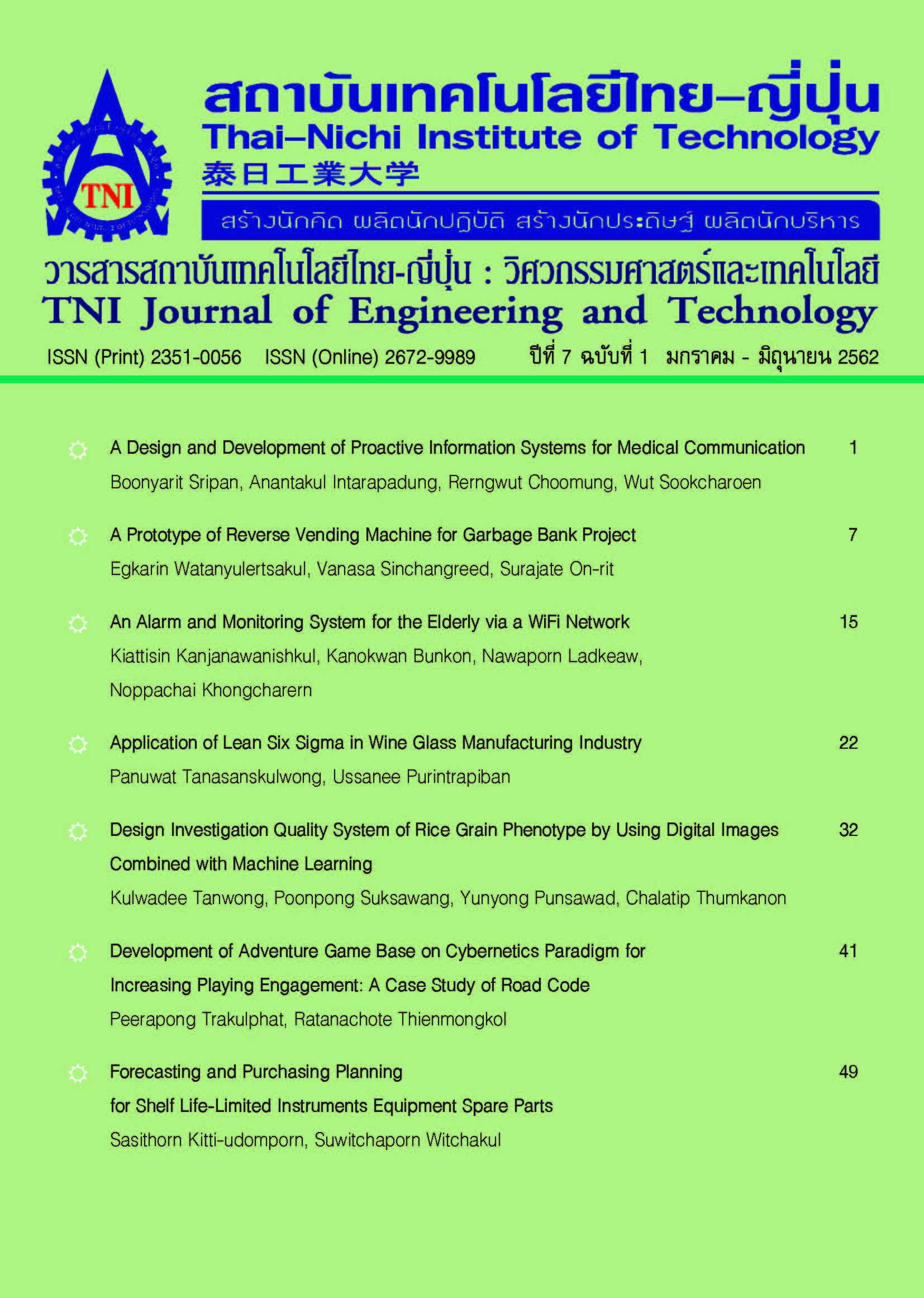A Design and Development of Proactive Information Systems for Medical Communication
Main Article Content
Abstract
This research aims to develop proactive information system architecture for medical communication to be used for proactive communication between medical personnel and the general public. The obtained results will be used for design and develop the proactive information system architecture by using techniques for developing a Multi-Tiered Client-Server Architecture with the structure of the computer network system communicates between computers. The system will be divided into two systems: 1) Proactive Search System serves to search for proactive medical information and question taking place on
the public website 2) Enquiry Management serves to record and store medical questions and answers.
With researching about the proactive information system evaluation for medical communications in term of effectiveness, we are found 621 questions through the internet on the public website between January and June 2018. When compared to the same period on 2017, it is found that medical questions increased by 43% and the performance evaluation is the fastest and the most accurate in finding a medical question, and the most satisfied in responding to medical questions. Therefore, the proactive information system architectures for medical communication is an architecture that helps to access medical questions and leads to the proactive communication between medical personnel and general person, patient and the patient's family, which can reduce the medical gap.
Article Details
Article Accepting Policy
The editorial board of Thai-Nichi Institute of Technology is pleased to receive articles from lecturers and experts in the fields of engineering and technology written in Thai or English. The academic work submitted for publication must not be published in any other publication before and must not be under consideration of other journal submissions. Therefore, those interested in participating in the dissemination of work and knowledge can submit their article to the editorial board for further submission to the screening committee to consider publishing in the journal. The articles that can be published include solely research articles. Interested persons can prepare their articles by reviewing recommendations for article authors.
Copyright infringement is solely the responsibility of the author(s) of the article. Articles that have been published must be screened and reviewed for quality from qualified experts approved by the editorial board.
The text that appears within each article published in this research journal is a personal opinion of each author, nothing related to Thai-Nichi Institute of Technology, and other faculty members in the institution in any way. Responsibilities and accuracy for the content of each article are owned by each author. If there is any mistake, each author will be responsible for his/her own article(s).
The editorial board reserves the right not to bring any content, views or comments of articles in the Journal of Thai-Nichi Institute of Technology to publish before receiving permission from the authorized author(s) in writing. The published work is the copyright of the Journal of Thai-Nichi Institute of Technology.
References
Natioal Statistical Office, Survey on the Use of Information and Communication Technology in Households. Bangkok: Forecast Statistics Division, 2018
P. T. Kotler and G. Armstrong, Principles of Marketing, 15th ed. Upper Saddle, N.J: Pearson, 2013.
A. Intaraphadung, Object-Oriented Programming Analysis, Design and Programming. Bangkok: Phranakhon Rajabhat University, 2017.
R. V. Krejcie and D. W. Morgan, “Determining Sample Size for Research Activities,” Educational and Psychological Measurement, vol. 30, no. 3, pp. 607–610, Sep. 1970.
J. Bas, The Pfeiffer Library Volume 25, 2nd ed. United States: Jossey-Bass/Pfeiffer, 1998.
K. Malaiwong, Seminar documents National Strategy for 20 years and Thailand 4.0. Bangkok: Chulalongkorn University, 2017.
O. Aimsiriwong, Computer Science and Information Technology. Bangkok: Se-education, 2017.
D. Berlo, Process of Communication: An Introduction to Theory and Practice. San Diego, California: Harcourt School, 1960.
B. M. Gross, “What are your Organization’s Objectives?: A General-Systems Approach to Planning,” Human Relations, vol. 18, no. 3, pp. 195–216, Aug. 1965.


